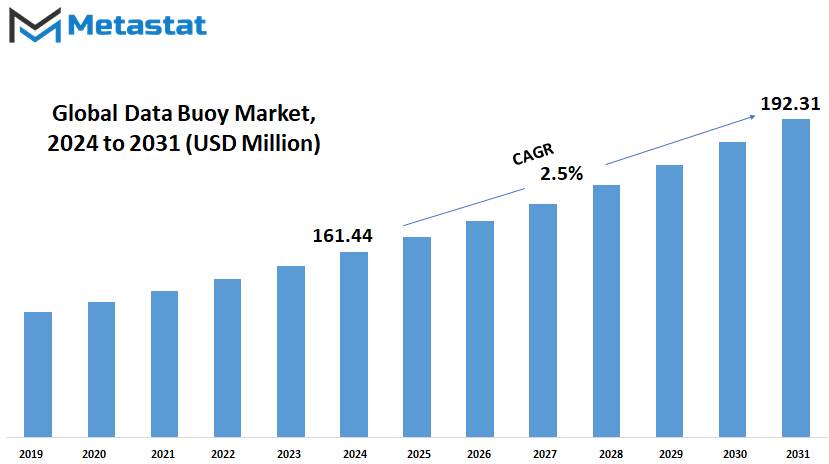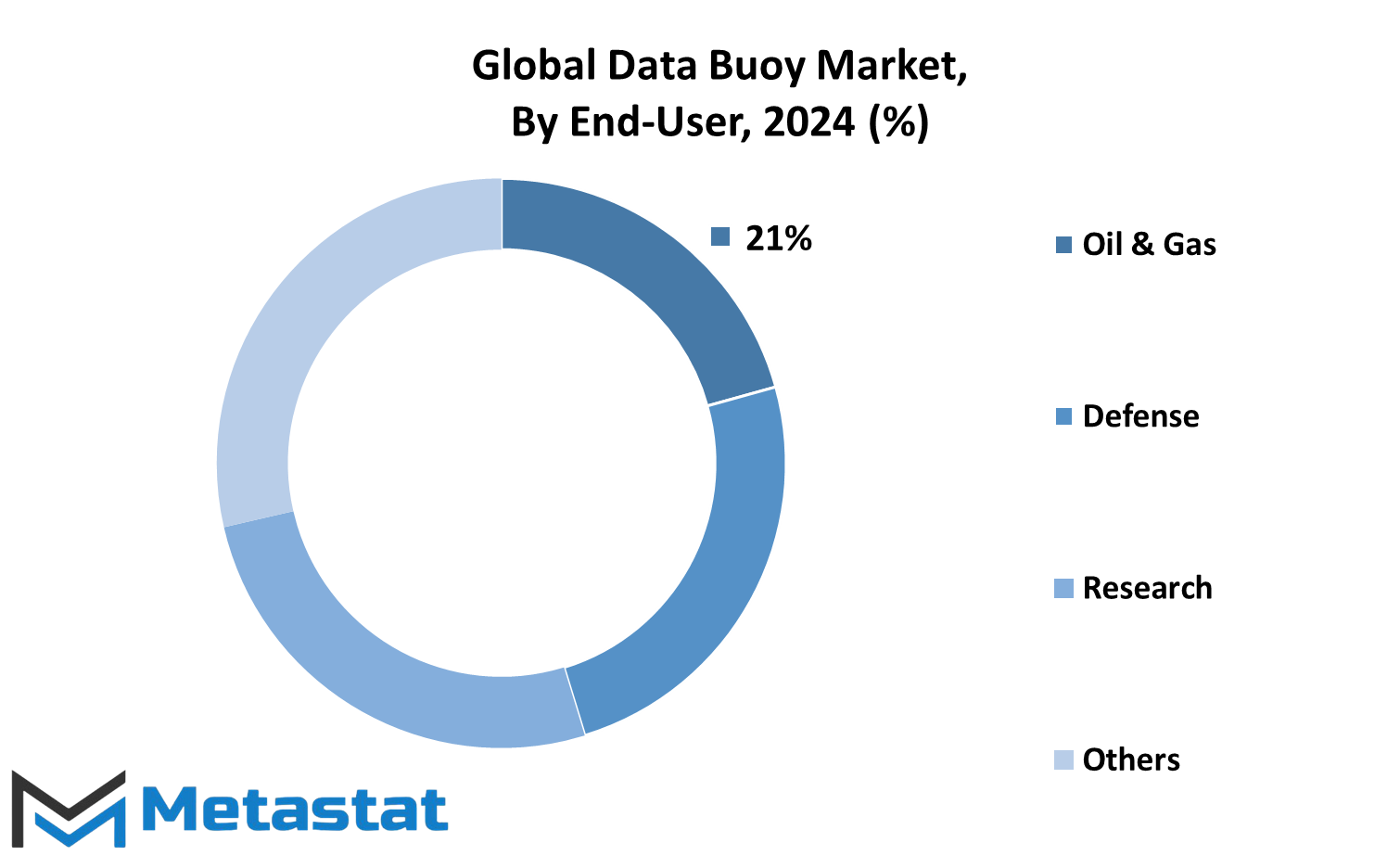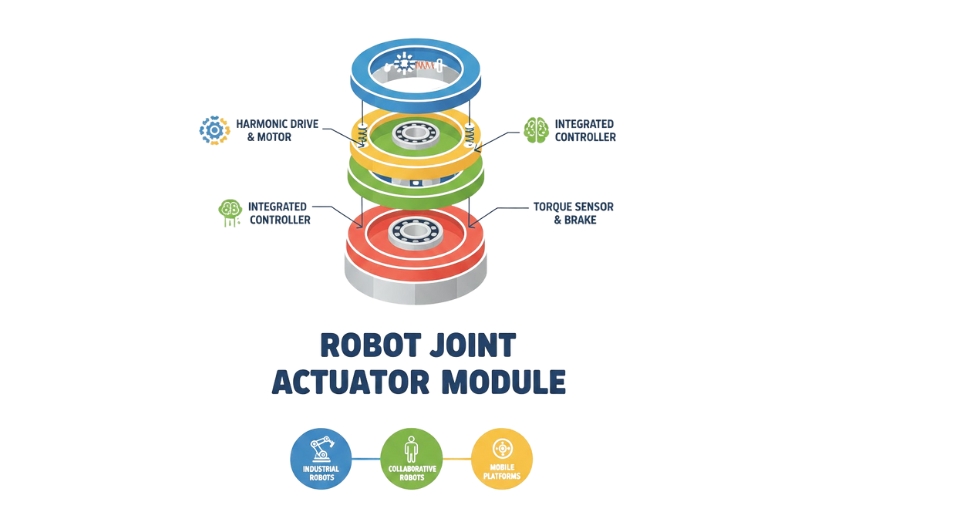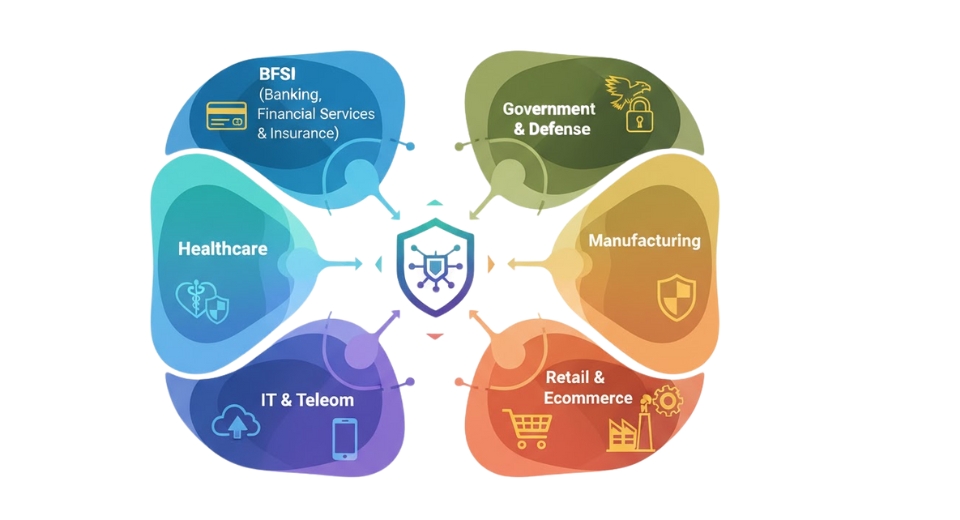MARKET OVERVIEW
The Global Data Buoy market represents a burgeoning industry at the intersection of technology and oceanography. This sector, driven by a growing demand for real-time environmental monitoring, encompasses the production, distribution, and utilization of data buoys across various marine applications. Data buoys, equipped with sensors and communication systems, serve as vital instruments for collecting and transmitting oceanic data, facilitating a deeper understanding of marine environments.
One of the primary drivers propelling the Global Data Buoy market forward is the increasing emphasis on climate change mitigation and adaptation. As concerns about the impact of climate change on oceans intensify, there is a heightened need for accurate and timely data to monitor changes in sea surface temperature, ocean currents, and other crucial parameters. Data buoys play a pivotal role in this regard, enabling scientists, researchers, and policymakers to gather essential information for climate modeling, forecasting, and decision-making.
Moreover, the maritime industry relies heavily on data buoys for enhancing safety and efficiency in marine operations. From shipping and offshore oil and gas exploration to fisheries management and coastal monitoring, the deployment of data buoys helps mitigate risks, optimize routes, and ensure compliance with environmental regulations. As technological advancements continue to improve the capabilities of data buoys, their adoption across diverse maritime sectors is expected to increase significantly.
In addition to scientific and commercial applications, the Global Data Buoy market is poised to witness growth in the defense and security sector. Military agencies and naval forces around the world utilize data buoys for various purposes, including maritime surveillance, search and rescue operations, and underwater communications. The integration of advanced sensor technologies and autonomous capabilities into data buoy systems enhances their effectiveness in monitoring maritime activities and safeguarding national interests.
Furthermore, the emergence of the Internet of Things (IoT) and satellite communication technologies is reshaping the landscape of the Global Data Buoy market. Data buoys are becoming increasingly interconnected and autonomous, enabling seamless data transmission and remote monitoring capabilities. This connectivity not only improves the efficiency of data collection and analysis but also expands the reach of oceanographic research and monitoring efforts to remote and inaccessible regions of the world's oceans.
Looking ahead, the Global Data Buoy market is poised for continued expansion, driven by technological innovation, environmental awareness, and increasing demand for oceanic data. With ongoing developments in sensor technology, communications infrastructure, and data analytics, data buoys will play an ever more significant role in advancing our understanding of the world's oceans and addressing the challenges posed by climate change, maritime security, and sustainable ocean management. As stakeholders across industries recognize the value of real-time ocean monitoring, the Global Data Buoy market is expected to flourish, contributing to a more resilient and sustainable marine ecosystem.
Global Data Buoy market is estimated to reach $192.31 Million by 2031; growing at a CAGR of 2.5% from 2024 to 2031.

GROWTH FACTORS
The Global Data Buoy market is witnessing significant growth driven by several key factors. One of the primary drivers is the increasing demand for real-time environmental monitoring and forecasting. This demand stems from various applications such as weather forecasting and oceanography. With the ever-growing concern over environmental changes, there is a heightened need for accurate and timely data to understand and predict natural phenomena.
Another factor contributing to the growth of the Data Buoy market is the emphasis on maritime safety and security. Monitoring ocean conditions and hazards is crucial for ensuring the safety of maritime activities such as shipping and fishing. Data buoys play a vital role in providing real-time information about sea conditions, helping to mitigate risks and prevent accidents at sea.
However, despite the significant growth prospects, there are challenges that could impede market expansion. One such challenge is the high initial investment required for deploying data buoy systems, along with the ongoing maintenance costs. This could limit the adoption of data buoys, particularly in regions with limited resources or budget constraints.
Furthermore, data buoys are vulnerable to damage from extreme weather events and marine traffic. Storms, rough seas, and collisions with vessels pose risks of damage to buoy systems, which can lead to disruptions in data collection and loss of valuable information.
Despite these challenges, there are opportunities for the Data Buoy market to flourish in the future. One promising opportunity lies in the integration of advanced sensor technologies and data analytics. By incorporating cutting-edge sensors and analytics tools, data buoy systems can enhance their capabilities for collecting and analyzing environmental data. This would not only improve the accuracy of environmental insights but also open up new avenues for applications such as climate research and marine resource management.
The Global Data Buoy market is poised for growth, driven by the increasing demand for real-time environmental monitoring and maritime safety. While challenges such as high costs and vulnerability to damage exist, the integration of advanced technologies offers promising opportunities for market expansion in the years to come.
MARKET SEGMENTATION
By Type
The Global Data Buoy market is a significant component of the ever-growing field of oceanographic research and marine data collection. It encompasses various types of buoys designed to collect and transmit data from the ocean to researchers and scientists on land. These buoys play a crucial role in monitoring ocean conditions, weather patterns, and environmental changes.
One of the primary segments within the Global Data Buoy market is categorized by type, which includes Moored Buoys, Drifting Buoys, Tethered Buoys, and Others. Each type serves a specific purpose in gathering data from different parts of the ocean.
Moored buoys are anchored to the seafloor and remain stationary in one location for an extended period. They are equipped with sensors to measure parameters such as sea surface temperature, wave height, and ocean currents. Moored buoys provide valuable long-term data records, allowing scientists to track trends and fluctuations in oceanic conditions over time.
Drifting buoys, on the other hand, are designed to float freely with ocean currents. They contain sensors that measure various parameters while drifting across the ocean's surface. These buoys are particularly useful for studying ocean currents, tracking the movement of pollutants or marine debris, and monitoring the spread of oil spills.
Tethered buoys are connected to a vessel or platform via a tether or cable. They are deployed in locations where continuous monitoring is required, such as offshore oil rigs or research stations. Tethered buoys can be equipped with a variety of sensors to collect data on water quality, meteorological conditions, and other environmental factors in real-time.
The category of Others encompasses a diverse range of specialized buoys designed for specific research purposes. This may include buoys equipped with acoustic sensors for studying marine mammals, buoys with biological sensors for monitoring plankton populations, or buoys with remote sensing capabilities for mapping sea ice or detecting algal blooms.
Overall, the Global Data Buoy market plays a vital role in advancing our understanding of the world's oceans and their impact on global climate systems. As technology continues to evolve, these buoys will remain indispensable tools for monitoring and managing our marine environments.
By Power Type
The global data buoy market is segmented based on power type, with two main categories: solar-powered and battery-powered types. In 2020, the solar-powered segment was valued at 83 million USD, while the battery-powered segment was valued at 64.2 million USD. These figures indicate the significant market presence and potential growth for both power types in the coming years.
Solar-powered data buoys utilize solar panels to convert sunlight into electricity, providing a sustainable and environmentally friendly power source. With advancements in solar technology and increasing awareness of renewable energy, the solar-powered segment is expected to witness steady growth. As concerns about climate change and carbon emissions continue to rise, industries are increasingly adopting clean energy solutions, driving the demand for solar-powered data buoys.
On the other hand, battery-powered data buoys rely on rechargeable batteries to operate, offering flexibility in deployment and usage. These buoys are particularly suitable for areas with limited sunlight or where continuous power supply is essential. Despite the prevalence of solar energy, battery-powered data buoys remain an integral part of the market, catering to specific operational needs and preferences.
Looking ahead, advancements in battery technology, such as improved energy density and longer lifespan, will enhance the performance and efficiency of battery-powered data buoys. Additionally, innovations in power management systems will optimize energy usage and prolong battery life, further driving the adoption of battery-powered solutions.
Moreover, the integration of smart technologies, such as IoT (Internet of Things) and AI (Artificial Intelligence), will revolutionize data buoy operations, enabling real-time monitoring and data analysis. This connectivity will enhance decision-making processes, improve resource allocation, and streamline operations, contributing to the overall growth of the data buoy market.
Furthermore, emerging applications in marine research, environmental monitoring, and offshore industries will create new opportunities for market expansion. As industries seek to gather accurate and reliable data in diverse environments, the demand for data buoys will continue to rise, driving innovation and investment in the market.
The global data buoy market is poised for significant growth, with both solar-powered and battery-powered segments playing crucial roles in meeting the evolving needs of various industries. Advances in technology, coupled with increasing environmental consciousness and expanding applications, will drive the market forward, shaping the future of oceanic data collection and analysis.
By Application
In today's interconnected world, the Global Data Buoy market is witnessing significant growth and diversification. This expansion is primarily driven by the increasing demand for accurate and real-time data in various fields. When we look at the market segmentation, we find that it is further divided by application into Weather Forecasting, Climate Research, Oceanography, Disaster Management, and other sectors.
One of the primary applications of data buoys is in Weather Forecasting. With the advancement in technology, the accuracy of weather predictions has significantly improved. Data buoys play a crucial role in this process by collecting real-time data on various atmospheric parameters such as temperature, humidity, wind speed, and pressure. This data is then used by meteorologists to generate accurate weather forecasts, enabling individuals and organizations to make informed decisions.
Similarly, data buoys are extensively utilized in Climate Research. Climate change is one of the most pressing issues of our time, and understanding its dynamics requires continuous monitoring of various environmental factors. Data buoys help researchers gather valuable data on ocean temperature, salinity, carbon dioxide levels, and other parameters, contributing to our understanding of climate patterns and trends.
In the field of Oceanography, data buoys are indispensable tools for studying the oceans and their ecosystems. They provide vital information on ocean currents, wave heights, sea level changes, and marine life, enabling scientists to monitor environmental changes and assess the impact of human activities on marine ecosystems.
Moreover, data buoys play a critical role in Disaster Management. Natural disasters such as hurricanes, tsunamis, and cyclones can have devastating consequences on coastal communities. Data buoys help authorities monitor ocean conditions and detect early warning signs of potential disasters, allowing them to take timely preventive measures and mitigate risks.
Apart from these major applications, data buoys find uses in various other sectors such as maritime navigation, fisheries management, and offshore industry. With technological advancements, we can expect further innovations in data buoy technology, leading to the development of more advanced and efficient systems.
The Global Data Buoy market is witnessing rapid growth and diversification driven by the increasing demand for accurate and real-time data in various fields such as Weather Forecasting, Climate Research, Oceanography, Disaster Management, and others. As technology continues to advance, we can expect data buoys to play an increasingly vital role in monitoring and managing our oceans and environment.
By End-User
The global Data Buoy market is poised for significant growth and transformation in the coming years. This market, divided by end-users into Oil & Gas, Defense, Research, and Other categories, is driven by the increasing need for accurate and real-time data collection in various industries.
In the Oil & Gas sector, data buoys play a crucial role in monitoring oceanographic conditions, which is essential for offshore drilling operations. These buoys provide valuable information on wave heights, sea currents, and weather patterns, helping companies optimize their operations and ensure safety. As the demand for energy continues to rise, the Oil & Gas industry will increasingly rely on advanced data collection tools, including data buoys, to enhance their exploration and production activities.
The Defense sector also stands to benefit significantly from advancements in data buoy technology. Military operations often require precise information about ocean conditions for navigation and strategic planning. Data buoys equipped with advanced sensors can provide critical data on underwater acoustics, sea surface temperatures, and other environmental factors. This information is vital for submarine operations, coastal surveillance, and the deployment of naval assets. As geopolitical tensions and the need for maritime security grow, the demand for sophisticated data buoys in defense applications will likely increase.
Research organizations and academic institutions utilize data buoys for a wide range of scientific studies. These buoys help researchers collect data on climate change, marine ecosystems, and oceanographic processes. With the growing emphasis on understanding and mitigating the impacts of climate change, data buoys will become even more essential tools for environmental monitoring and research. As technology advances, these buoys will likely feature enhanced capabilities, such as improved sensors and data transmission systems, enabling more comprehensive and accurate data collection.
Other sectors, including shipping, fisheries, and coastal management, also rely on data buoys for various applications. For instance, data buoys can provide critical information for safe navigation, fishery management, and coastal erosion monitoring. As global trade and maritime activities expand, the need for reliable data on ocean conditions will drive the demand for data buoys across these sectors.
Looking to the future, the global Data Buoy market will continue to evolve with advancements in technology. The integration of artificial intelligence and machine learning with data buoy systems will enhance their ability to analyze and interpret collected data, providing more actionable insights. Additionally, the development of more durable and energy-efficient buoys will improve their longevity and performance in harsh marine environments.

REGIONAL ANALYSIS
The global Data Buoy market is analyzed on a regional basis, considering the geographical distribution across various continents. North America, Europe, Asia-Pacific, South America, and the Middle East & Africa constitute the major regions under scrutiny.
Starting with North America, it encompasses the United States, Canada, and Mexico. These countries represent significant markets for Data Buoys due to their extensive maritime activities, research initiatives, and environmental monitoring efforts. The United States, in particular, is a key player in driving market growth, owing to its advanced technological infrastructure and substantial investment in oceanographic research.
Moving on to Europe, it comprises countries such as the United Kingdom, Germany, France, Italy, and the rest of Europe. Europe boasts a robust maritime industry, with countries like the UK and Germany leading in terms of technological innovation and research capabilities. The demand for Data Buoys in Europe is primarily driven by applications in weather forecasting, offshore energy production, and marine research.
In the Asia-Pacific region, key markets include India, China, Japan, South Korea, and the rest of Asia-Pacific. This region is witnessing rapid economic growth, leading to increased maritime trade and exploration activities. Countries like China and Japan are investing heavily in oceanographic research and infrastructure development, thereby fueling the demand for Data Buoys in the region.
South America, comprising countries like Brazil, Argentina, and the rest of South America, also presents significant opportunities for market players. The region's vast coastline and maritime resources make it conducive for the deployment of Data Buoys for various applications, including marine navigation, oil and gas exploration, and environmental monitoring.
The Middle East & Africa region includes GCC countries, Egypt, South Africa, and the rest of the Middle East & Africa. Despite being relatively smaller markets compared to other regions, countries like Saudi Arabia and the UAE are investing in maritime infrastructure and research, driving the demand for Data Buoys in the region.
The global Data Buoy market exhibits varying dynamics across different regions, with each region offering unique opportunities and challenges for market players. Understanding these regional nuances will be crucial for companies seeking to capitalize on the growing demand for Data Buoys worldwide.
COMPETITIVE PLAYERS
In the ever-expanding Global Data Buoy market, several key players are vying for dominance. These players, comprising both established companies and emerging contenders, are shaping the landscape of oceanic data collection and analysis
Among the frontrunners in this competitive arena are Aanderaa Data Instruments AS, AXYS Technologies, Inc., Smart Buoy Co., Develogic GmbH, Fendercare Marine, Fugro N.V., JFC Manufacturing Co., Ltd., MetOcean Telematics, Mobilis SAS, NexSens Technology, Inc., Observator Group, Ocean Scientific International Ltd, NexSens Technology, Inc, Buoyage Systems Australia Pty Ltd, and Imbros. Each of these companies brings its own unique strengths and innovations to the table, driving forward advancements in buoy technology and its applications.
Aanderaa Data Instruments AS, for instance, has established itself as a leader in environmental monitoring solutions, with a focus on precise and reliable data collection. Their expertise in sensor technology enables them to provide comprehensive solutions for a wide range of environmental monitoring needs.
Similarly, AXYS Technologies, Inc. stands out for its commitment to developing cutting-edge buoy systems tailored to specific environmental conditions. By leveraging advanced engineering techniques, AXYS Technologies delivers robust and adaptable solutions that meet the diverse requirements of their clients.
Meanwhile, Smart Buoy Co. has made significant strides in the integration of artificial intelligence and machine learning algorithms into buoy systems. Their smart buoy solutions are capable of autonomously collecting, analyzing, and transmitting data in real-time, revolutionizing the way oceanic data is gathered and utilized.
Develogic GmbH is another prominent player in the Data Buoy market, known for its focus on rugged and durable buoy designs suited for harsh maritime environments. Their emphasis on reliability and longevity ensures that their buoy systems can withstand the rigors of extended deployment, providing uninterrupted data collection over extended periods.
In addition to these established players, a new wave of innovators is also making waves in the Data Buoy market. Companies like Buoyage Systems Australia Pty Ltd and Imbros are leveraging emerging technologies such as IoT (Internet of Things) and cloud computing to develop next-generation buoy systems that offer enhanced functionality and connectivity
As the demand for accurate and timely oceanic data continues to grow, competition among Data Buoy manufacturers will only intensify. In this dynamic landscape, companies that can innovate rapidly, adapt to changing market demands, and deliver value-added solutions will emerge as the true leaders of tomorrow's Data Buoy market.
Data Buoy Market Key Segments:
By Type
- Moored Buoys
- Drifting Buoys
- Tethered Buoys
- Others
By Power Type
- Solar Powered Type
- Battery Powered Type
By Application
- Weather Forecasting
- Climate Research
- Oceanography
- Disaster Management
- Others
By End-User
- Oil & Gas
- Defense
- Research
- Others
Key Global Data Buoy Industry Players
- Aanderaa Data Instruments AS
- AXYS Technologies, Inc.
- Smart Buoy Co.
- Develogic GmbH
- Fendercare Marine
- Fugro N.V.
- JFC Manufacturing Co., Ltd.
- MetOcean Telematics
- Mobilis SAS
- NexSens Technology, Inc.
- Observator Group
- Ocean Scientific International Ltd
- NexSens Technology, Inc
- Buoyage Systems Australia Pty Ltd
- Imbros
WHAT REPORT PROVIDES
- Full in-depth analysis of the parent Industry
- Important changes in market and its dynamics
- Segmentation details of the market
- Former, on-going, and projected market analysis in terms of volume and value
- Assessment of niche industry developments
- Market share analysis
- Key strategies of major players
- Emerging segments and regional growth potential








 US: +1 3023308252
US: +1 3023308252






